ArbitraryWater's Favorite Games of 2020 (that didn't come out in 2020)
By ArbitraryWater 6 Comments
Hi Hello and welcome to the true Game of the Year blog; the one that matters. For you see, during my many mythical journeys to escape the real world, I played many a video game that did *not* come out in 2020. In some ways, is this not the true game of the year list, unconcerned with time and space and merely quality? No? Well, in any case, these are games I played a significant amount of during 2020 for the first time and liked enough to cobble together in a vaguely ordered list. Before that though, some things need wrapping up:
THE YEAR OF STRATEGY
2020 was also the YEAR OF STRATEGY, not just because of my hit streaming series “Totally Tactical, Somewhat Strategic” but also because… it was very easy to distract myself from the world plague and the fascism and whatnot with in-depth strategy games. My official Tier List is, as follows:
Worst Game(s) I Played To Completion This Year: Onimusha Warlords and Ninja Gaiden 3: Razor’s Edge
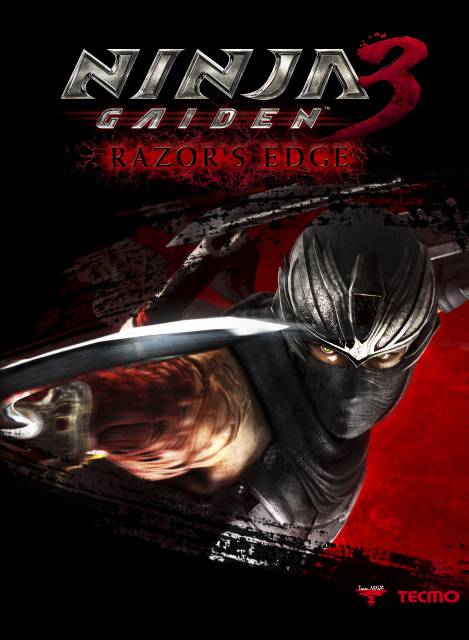
Outside of the truly wretched titles experienced during the hit streaming/blogging series The Wheel of Dubious RPGs, I’ve been pretty good about avoiding the things I didn’t like in 2020… with the grand exception of the two titles listed above. To be frank, Onimusha might be one of the more miserable game experiences I had this year, and I finished it in one sitting. You might think I’m exaggerating, but honestly this early PS2 game felt like the malformed, bastard half-step between Resident Evil and Devil May Cry, neither being a great action nor survival horror/adventure game. As someone who likes both character action and survival horror games, it hit the exact sour spot between those two genres… while still being exactly short and evocative enough for me to see it to its conclusion. Its combat is clunky and difficult, but not especially deep, and aside from the infamous “water room” sliding tiles puzzle most of its adventure game elements are straightforward.
I can’t speak to the rest of the franchise, which somehow managed four installments over the PS2’s lifespan, including a Smash Bros-esque spinoff and one inexplicably co-starring Jean Reno, but this is one of those cases where I feel like coming to something outside of its original context was nothing but detrimental. Given my recent ill-considered retro purchases, I’m probably the last person who should be saying this, but there are cases where certain things are better left in the past. I imagine Onimusha was a technically impressive, entirely acceptable showpiece for the new PS2 when it came out in January of 2001… but nah. Nope. Not a fan. At least I accidentally got the speedrun trophy without trying.
Ninja Gaiden 3: Razor’s Edge, is a more “interesting” case, inasmuch as it’s less of an awful game and more of a band-aid over a gaping wound. If Resident Evil 6 is my personal favorite poster child for everything wrong with AAA video games during the 360/PS3 era, then Ninja Gaiden 3 is now a close second. In a misguided attempt to appeal to a larger (Western) audience, the developers at Team Ninja decided the things Ninja Gaiden really needed were an abundance of cutscenes, quick-time events, and scripted bullshit. The franchise whose core pillars are ninjas, demons, boobs, and some combination of the three, does not, in fact, need a deep and involved storyline that tries to make Ryu Hayabusa feel guilt for murdering a buncha people. Nor is Ninja Gaiden 3’s storyline worth anyone’s time or effort. But hey, if you want another game from the early 2010s starring Troy Baker, where you can shake the Dualshock 3 to make the boobs jiggle, it certainly spends more oxygen on those things than is ever necessary.
Now, I played the “Razor’s Edge” version of the game, which is the “fixed” version that added things like “more than one weapon” and “more than one nimpo” and also, inexplicably, “a handful of levels where you play as Ayane.” With these additions, Ninja Gaiden 3 more closely resembles a worse version of its predecessor (which in turn was a worse version of its predecessor) and at its best it can still be very satisfying to murder hosts of dudes in the excessive, violent fashion that Ryu Hayabusa is known for. I’ve made my pro-Falcon’s Talons and Lunar Staff agenda abundantly clear at this point, and am more than happy to admit that when Razor’s Edge just gives you a dumb combat arena to murder hosts upon hosts of military soldiers, ninjas, and demons it’s still capable of being fun. The problem is, much like RE6, there’s almost always something dumb getting in the way, like a bad boss fight, a bad scripted sequence, an insta-death QTE, whatever. Ninja Gaiden 3 is a reminder that even a solid core combat loop, something that works fine in the context of a survival mode, cannot save a game if the rest of it is poor. So yeah, like Resident Evil 6 I guess.
Visual Novel of the Year: Umineko When they Cry
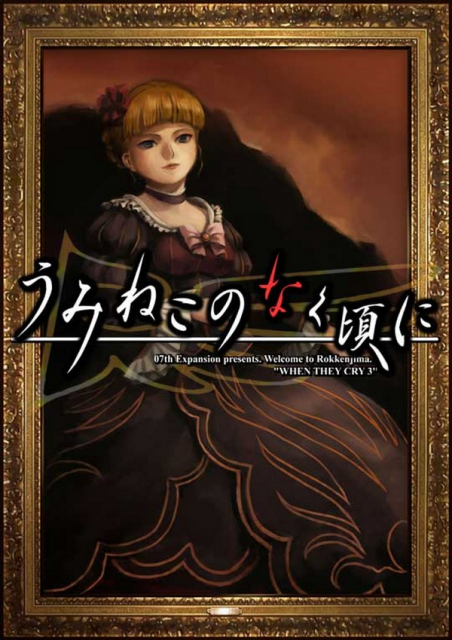
Like most Visual Novels, it’s hard to talk about what makes Umineko so great without getting into deep spoilers. It’s the follow-up to Higurashi: When they Cry, although outside of some references and metatextual stuff you’re not going to miss much. The basic premise is “Wealthy family gathers for their annual conference on a remote island during a hurricane. Witches Ensue.” though to call that the tip of the iceberg is perhaps an understatement. It’s a dense take on the murder mystery (and sometimes horror?) genre that goes some truly anime batshit crazy places, but in a good way. Over the course of its 80+ hour run-time, you’ll know far more than you’d ever want to about the Uroshimiya family, locked room mysteries, and fanbase in-jokes like “tiny bombs” than you’d ever want to. For as much as it leans into being maximally “anime” a lot of the time, it never reduces its characters to tropes, and it doesn’t flinch from some of the grisly and upsetting subject matter it delves into (and, for the most part, manages to handle pretty deftly.)
Sure, the pacing over those eight episodes is occasionally kind of terrible. There are a handful of moments that drag on forever, but I do think the end result is worth it. It’s commitment, and I understand the apprehension of wanting to get into something so long, but unlike Higurashi you don’t have a half-decent anime adaption to fall back on. I highly recommend looking up the 07th mod, which adds in the PS3 portraits and voice acting. You haven't lived until you've heard Beatrice say the words "USHIROMIYA BATLERRRRRR." C’mon, you’re still stuck inside, what else are you going to do with your time?
Replay of the Year: Pillars of Eternity

I replayed a decent number of games in 2020, including the original Resident Evil 3 (it’s still “fine”), Dragon Age Origins (which inspired me to write a 5,000 word retrospective) and even Ocarina of Time, sort of. Before we move on, I just wanna say that Master Quest is weird. It does some interesting things with its dungeon remixes, like having you go through Dodongo’s Cavern backwards and forcing you to do things with OOT’s mechanics that are only lightly touched on in the base game. That said, limited by the exact same level geometry as the base game means some of the things that Master Quest does feel very ROM hack-y. Which, fair, it is exactly that, and it’s been a much more interesting revisit in this context. But I’m talking stuff like being able to ignore 80% of the Fire Temple because the boss key is in one of the first few rooms (the rest of the dungeon is mostly just for Skultillas.) As a way to replay Ocarina of Time, it was favorable to playing through a game that is hard-wired into parts of my memory; especially with the 3DS version also mirroring the entire world. As something I’d put among the pantheon of 3D Zelda games? Eh, not so much.
But I digress. After working out my complicated feelings with Dragon Age, I decided to revisit a more recent favorite, my 2015 Game of the Year, Pillars of Eternity. On top of finding out that the review I wrote five years ago is no longer accessible, it turns out I might like the original Pillars of Eternity more than I did back then. It might start slow, and the combat sometimes descends into moderate clusterfuck in a way its sequel is better about, but I will continue to say it’s easily one of my favorite CRPGs. Divinity OS 2 might be the best CRPG of the last decade and a poster child for what the genre is capable of, but my heart will always be with Real Time w/pause.
There’s a pervasive sense of melancholy to Pillars’ world that I appreciate, intertwined with a lot of historically-informed worldbuilding. For as much as it takes its cues from Baldur’s Gate and the rest of the Infinity Engine, that’s probably the biggest difference, and one of the things that seemed to throw people off the most. Well, that and the fact that some of the characters you get early on kinda suck. Part of it might be the person who wrote the original draft of those characters souring my perception, but both Durance and Grieving Mother reflect the worst inclinations of Chris Avellone’s writing style. They’re both overwritten in a game where the best characters are a tad reserved, and they’re both very good at saying very little with a lot of text. Perhaps more interestingly, I finally played The White Forge DLC and it’s… actually very good? It’s a little awkwardly shoved into the main story, difficulty wise, but in terms of RPG expansion content it’s the fun Icewind Dale throwback we all needed, with a lot of good, tough enemy encounters and dungeon design.
I also played through most of Pillars II again, but I don’t have as much to say about it beyond what I said about it in 2018. It’s a better game than the original in a lot of important ways, except maybe the main story, which falls a little limp. Hot damn, it’s pretty, and hot damn it’s got a lot of really good, well-written RPG machinations. Do you like commentary on colonialism? I SURE DO. That’s not sarcastic. I was a history major. Anyway, Pillars is still good, fight me, etc.
Will 2021 be the year I finally get through all of Pathfinder Kingmaker? (probably not. Excited for Wrath of the Righteous though)
Ongoing Game of the Year: Total War: Warhammer II
Total War Warhammer II is very good and I like it a lot if you haven’t noticed. Anyway onto the main list:
10. Best Substitute for a Fourth or Fifth XCOM 2 Playthrough: Phoenix Point
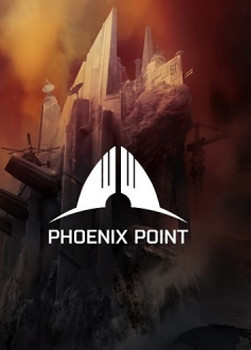
Phoenix Point launched in late 2019 in a state that, generously, could be called “hot out of the oven.” A year later, it’s in much better shape, and it’s a lot easier to recommend Julian Gallop’s new take on the franchise he helped create. In practice, it’s something of a middle ground between classic X-COM and nu Firaxis-era XCOM, with the additional gimmick of having manual aiming circles instead of percentile chances to hit. As a result, it’s a tad more finicky and involved compared to the basic flow of Enemy Within and War of the Chosen, but it’s also a lot more precise? There’s a decent amount of strategy in regards to taking targeted shots at vulnerable enemy body parts, and in general it’s not a terrible idea to reserve enough action points after taking a shot to get behind cover. On the overworld map, a lot of it is about juggling affinity from three opposed factions, all of whom have drastically different tech that heavily informs playstyle. New Jericho has bigh guns and heavy armor, Synedrion has precision weaponry and tricky tech shit, and the Disciples of Anu have viruses, mutations, and close-quarters dominance.
It’s also more willing to get mean in a way I appreciate, with a lot of missions being about getting in, finishing the objective, and getting out while enemy reinforcements constantly spawn. It’s not quite XCOM 2’s literal mission timers (which I’m also a fan of) but your soldiers also don’t get absurdly, dangerously overpowered in the same way as they can in those games. Instead, enemies get stronger variants as time goes by alongside your own technological advancements. It’s an interesting inversion on the usual XCOM difficulty curve, which tends to start high, before dropping and plateauing around the time you get access to lategame tech. I was genuinely kind of excited when the game started kicking my ass, and even at their most powerful your soldiers are still far more vulnerable and disposable… kinda like in Old X-COM. There’s a reason why they give you up to nine deployment slots. (protip: vehicles are super useful early on)
Where Phoenix Point started to fall down the rankings for your’s truly mostly has to do with structural stuff. The DLC included with the “Year One Edition” is awkwardly integrated and can be easily ignored if you don’t know what’s there. Perhaps more distressing is how much of the mid and late game turns into a game of whack a mole with haven defense and Pandoran lair missions. Like XCOM Enemy Unknown, Phoenix Point uses prefab level layouts instead of the procedurally generated ones of XCOM 2, which means you’ll be seeing a lot of the same maps as time goes on. You do this *a lot* (the easiest way to get resources is by farming Haven Defense missions) and so *a lot* of the later game is doing the same handful of mission types in the same handful of map layouts and… it really started to break me. It’s not like there isn’t variety either, between human enemies and even ancient alien robots. Dunno if the solution is some sort of auto-resolve, or cutting down on the most extraneous stuff, but after a point I just wanted to see it over. Given that it’s on Game Pass, I still highly recommend giving it a shot if you’re interested, but just be warned that it never quite reaches the level of refinement that Firaxis’ own efforts have reached. Still would rather play it than Xenonauts though.
9. Best Missing Link I didn’t know existed: Dino Crisis 2

So, around the same time I played through Onimusha and Ninja Gaiden 3, I also played through both the original Dino Crisis and its sequel. Dino Crisis 1 is an… interesting game, and as Shinji Mikami’s attempt to mix up the formula he popularized with Resident Evil, it has a lot of ideas. I’ll be frank here and say that in this case, interesting does not mean good, and most of Dino Crisis’ best ideas (using laser fences to keep raptors out, branching story decisions that determine gameplay sequences, still heavily emphasizing resource management) are crowded out by most of that game being kinda boring. When you’re not evading and/or shooting various dinosaurs in order to deal with crises, the vast majority of Dino Crisis is spent solving keycard cipher puzzles in extremely grey industrial and laboratory environments. It’s not a particularly great Resident Evil game in that sense, and while I’m glad I finally played it I also don’t think I’m really interested in playing it again.
Dino Crisis 2, on the other hand, is a late-model PS1 game that more-or-less throws any veneer of survival horror out the window in exchange for being rad as shit. It really does feel like an unsung middle step between old and new Resident Evil, complete with a Mercenaries style combo counter for chain-killing dinosaurs, which you can use to upgrade your weapons for better mercenaries-ing. There’s still a puzzle that needs to be solved, sometimes, and environments that need to be navigated, sometimes. There’s a turret sequence, like twice. But mostly, it’s a 5 hour don’t stop for nothing dinosaur blasting party whereupon the Crisis of Dinosaurs is solved not with the worst word puzzles, or even laser fences, but instead a sassy red haired lady (and also some dude named kevin) constantly moving forward and shooting the raptors in their faces. 10/10 would play again.
8. Second Best Time with Da Boyz: Warhammer 40K Dawn of War II: Retribution

Sure, while the Greenskin Rework is the clear and obvious winner of 2020’s Year of Strategy, I can’t not get by without discussing my time with Dawn of War II, which as I’ve been reminded, remains a personal favorite in the RTS genre. Having finally gotten around to playing Retribution, I’m still a big fan of the way DoW II handles its micro-heavy squad tactics, and even the Retribution campaign’s vague backtrack towards being a little more like Dawn of War 1 doesn’t change that. As someone who isn’t great at real-time stuff, it’s the one style of that genre I’ve retained any serious fondness for (well, outside of Total War, which is very much its own thing), and in particular Dawn of War 2’s constant forward momentum and focus is the exact brand I’m looking for. On normal it’s rarely relentless enough to overwhelm my weak-ass sensibilities (“Why isn’t this turn-based? Where’s the pause button to issue commands?”) but for the most part cannot be solved by right-clicking your squad onto whatever enemy is closest in range. Most of the time.
More importantly, you can finally play campaign as a faction that isn’t those damn vanilla, boring-ass Spayce Muhreens. While Retribution’s overall campaign structure is mostly the same regardless of who you pick, it’s kind of delightful to pick the Orks and have them spend the entire campaign barely understanding what’s going on. Honestly, I highly recommend it, and depending on how things go I think I could see myself streaming the original Dawn of War II campaign one of these days. It’s a good time. Pity they never made a sequel.
7. Best Not Actually A Horror Game: F.E.A.R. FIRST ENCOUNTER ASSAULT AND RECON
FEAR is a game that operates on exactly one volume, and that’s loud. It’s a game where you clear out dilapidated urban environments by slow-mo jumpkicking clone soldiers, and every now and then a vaguely spooky thing (that is also loud) will happen. For as much as that gameplay occasionally feels one-note, it’s built on a combat loop that works, and still works well. As one of the last big dedicated PC shooters of the 2000s before everything became made for consoles, it’s a definite artifact of its time, but in a good way? FEAR doesn’t care about turret sequences, or platforming, or really any sort of gameplay variation beyond dealing with squads of heavily armed enemies in mundane looking nighttime environments and blasting them into various forms of red mist. There are some really fun, goofy weapons in FEAR, between akimbo pistols, a high-powered laser rifle that just disintegrates whatever you hit, and a nailgun that pins enemies to walls in a ragdoll physics-y way that reminds you of 2005.
In a modern context it’s easy to see some of the strings that pull FEAR’s much vaunted enemy AI, but that doesn’t make it any less fun to see how enemies react to stuff like your flashlight, or try and flush you out of cover with grenades. More importantly, it’s the kind of hyperkinetic, violent, decently fast shooter that I tend to gravitate toward these days. You can’t exactly go in full DOOM guns blazing, but it’s just as willing to reward aggression as it is holding back, playing defensively, and trying to pick the enemy off at range. There are lean buttons, which is how you know it was made for PC. Is it scary? Hahahahaha no. The real scary part of FEAR is the part where, due to legal reasons, you have to separately download a DirectX fix to make it not stutter all the time assuming you’re running a processor newer than a Pentium IV. But of course, given my travails getting older games to run in 2020 gave me plenty of experience for this one. Maybe I'll give FEAR 2 a look. Third one sounds like a trainwreck, but why not give Project Origin a spin?
6. Best Sequel to a Game that came out in 1995 and only I’m into: Fantasy General II: Invasion
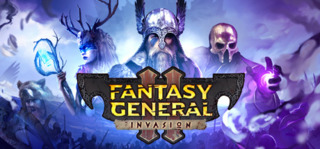
Who asked for a sequel to Fantasy General? You know, Fantasy General, the fantasy-themed Panzer General spinoff that SSI put out back when SSI was still a company? Apparently someone did, because a mere 24 years later a sequel was manifested into existence, courtesy of publisher Slitherine and Germany-based developer Owned by Gravity and… true to its name, it is, in fact, a sequel to Fantasy General. You know, that game that you’ve heard of, definitely got on GOG for free at some point and haven’t played? Well, I’m here to tell you that Fantasy General kicks ass, and its sequel, following up on many of the same concepts of the original, also kicks ass. Like, man, I could go off for a while about how much I like that original FG, and how it’s one of those unsung tactics games that deserves more love. Apparently, given the baffling existence of this sequel, I guess someone in Europe agrees with me.
Fantasy General II is, in some ways, the anti-Troubleshooter. It ignores a large chunk of the last 20 years of strategy games in favor of hyper-focusing on a refined version of the original in the way it operates, without many distractions outside of the hexes in front of you and the dudes to move around those hexes. It’s a lot like the wargames of old in that way, with a series of interlocking rock-paper-scissors relationships between units informing who you should move onto which hex to do what. You’ve got berserker viking men who are the damage dealers, the armored viking ladies for holding chokepoints, archers for arching (also defensive ranged support) giant eagles that drop explosive barrels, artillery trolls just kinda hanging out, skirmishers, etc. It’s can definitely be taken as being a tad simplistic, but it’s just a really solid meat and potatoes sort of strategy game in a time when I needed something like that in my life.
It also helps that the campaign is surprisingly decent on its own, with a lot of hand-crafted scenario design and even the occasional “story decision” that informs which hero characters come and go with your party. It’s not gonna win any awards for storytelling, but at the very least it’s a solid alternative to the more procedural games on this list. Check it out! There's a pretty lengthy demo on steam, if you're interested.
5. Best Deckbuilding Roguelite of the no less than four of those I have played this year: Slay the Spire
For as much as I like Monster Train, because I can win more than once in a blue moon, I fully admit that the superior deckbuilding roguelite I played in 2020 is probably still Slay the Spire (Also? Second most played switch game this year after Ring Fit.) Quite frankly, I think it’s a bastard and I think I’m still dumb and bad at deckbuilding, but I’ve managed to beat it enough times to say that it’s at least doable. Perhaps more impressively, there's a lot of thought put into the interplay between the different classes, the relics you acquire, and the enemies you face. Moreso than just about any other game this year, it was the one that led to multiple "oh shit, it's 2 AM" moments for me, after claiming that I'd only do "a few runs."
4. Most Visually Striking Throwback Shooter: Amid Evil
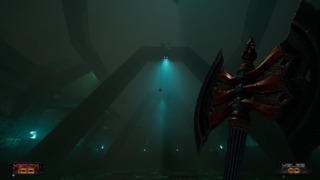
I’m on the record as liking fast, hyperkinetic bullshit shooters, and also on the record as liking a lot of these throwback games more than the games they’re actually throwing back to. What, are you seriously going to tell me, in the year of our lord 2021, that the single player campaign for Quake is worth my time? Should I torture myself with Hexen’s nonlinearity? Is Turok surprisingly alright on a PC at an acceptable frame-rate? Is Duke Nukem 3D a depressing relic of a time long past that just so happens to have some neat stuff in it? (there’s a reason why Ion Fury is not on this list and Amid Evil is.) Should I consider playing Blood? What’s a PowerSlave anyway? Dark Forces II: Jedi Knight? Should I just stream myself futzing around with old shooters?
Anyway, Amid Evil distinguishes itself with a bunch of cool, visually striking rasterized 3D models turned into sprites and trippy arcane-ish environments. It’s not quite as creative with its level design as DUSK, nor does it lean on the horror elements, but it’s a beautiful, fast shooter with a bunch of cool and weird Heretic ass magic weapons. The rocket launcher shoots exploding planets! That’s great! It’s fast and colorful and has ray tracing support and now I have a computer that does that stuff, it’s very, very pretty. Sometimes that’s all I want. There’s really not a ton else I can say in that regard? It’s good.
3. Best Tactics Game that Actually Manages to Do Something Other than Imitate Nu XCOM: Warhammer 40K Mechanicus
So I think the reason I’ve put Mechanicus here, above everything else involved in the YEAR OF STRATEGY is partially due to novelty and its own scrappy indie cred. Of the approximately fourty-thousand Warhammer 40K games made in the last handful of years, this is the one I’d point to and say “Yes, you should play this one. Also Gladius is neat, I guess.” Also, for once, it’s a game that doesn’t give me a half-shield icon when I’m next to cover. As someone who has been into “shit like this” for a while, it’s definitely more than a little baffling to see exactly how influential XCOM: Enemy Unknown has been for the last eight years of turn-based tactical combat. I am, as constantly mentioned, a generous advocate for XCOM in most of its forms (see: Troubleshooter on the other list) but sometimes I wish tactics devs would be a little more adventurous instead of taking those mechanics as granted.
So, obviously, the game of note this time around is notable entirely because it doesn’t do any of that shit. Warhammer 40K Mechanicus combines turn-based tactical fights with some Darkest Dungeon-esque exploration mechanics, pitting the Martian Techpriests of the Adeptus Mechanicus against the denizens of a Necron tomb world. If that sounds like gobbledygook, all you really need to know is that cyborg priests are fighting robot skeletons for technology and stuff. The longer you explore a Necron tomb, the more its inhabitants awaken, and the more you’ll have to deal with as you delve deeper. Of course… there’s often valuable technology or short-term boosts off the beaten path, with some “choose your own adventure” style dilemmas thrown in for good measure.
As mentioned, Mechanicus is very un-XCOM in how it flows. If you have line of sight and are within range, you’ll always hit barring special circumstances, so it’s not really about dice rolls. Instead, I’d say Mechanicus’ biggest aspect is managing a finite but replenishable shared resource between all of your units, which is required to activate most weapons and abilities. In addition to your techpriests, who can be equipped and leveled up as you see fit (hot tip: maybe don’t have more than one melee character) you can also spend deployment slots on more disposable Mechanicus troops. The Necrons, on the other hand, will just keep coming, and will even revive themselves if you don’t do a double tap. Now, this is the part where I fully admit that Mechanicus does betray itself as a smaller-budget indie thing, but I think it does a lot with the little it has. Yeah, environments tend to repeat, and there isn’t a ton of enemy variety (well outside of the DLC missions where you fight other Mechanicus forces) but it was my strategy game of choice during the early months of the year. To be frank, I think Mechanicus is both more interesting than XCOPS and less bloated than Gears Tactics (which, to be clear, would be a better game if they cut out the side missions.)
Also just wanna shoutout the soundtrack, which is rad. What does futureman robot cult sound like? This, apparently.
2. Best Game I Should’ve Played More of At Release: Legend of Grimrock II
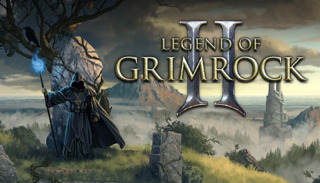
The secret upside to my Extra Life stream where I played Mass Effect Andromeda was remembering that Legend of Grimrock II is the best Dungeon Master/Eye of the Beholder “real-time rock dropping, square-dancing, side-stepping” game of the modern era. Not that it has much competition, anyway, outside of stuff like Vaporum and Aeon of Sands. For as much as the CRPG genre has flourished in the indie space, I don’t see a ton of dungeon crawlers in this style out there, which makes Grimrock II stick out even more.
What makes Grimrock stand head and shoulders above its predecessor? Scale, I think. While Grimrock 1 was a straight floor-to-floor crawl to the bottom, its sequel expands and opens up in a way that’s genuinely impressive. After getting through a handful of opening areas, you’re greeted with several paths forward and only the vaguest of guidance on where to go first. That means if you’re stumped, stuck, or getting murdered in one environment, you can take a step back and poke around somewhere else. There are secrets, weird little puzzles, and straight up cool hidden shit in every corner of the map, and some of it is hidden well enough that discovering it makes me feel like the smartest human alive. The combat is still a whole lotta square dancing, and the game does its best to be surprisingly… demanding, on that front?
In any case, it’s definitely on the backlog shortlist to finish in 2021. Not gonna claim I’m going for all the secrets, but it's at least more likely than some of the longer things out there.
1. 2020’s 2019 Game of the Year (and also 2020’s Game of the Year That Didn’t Come Out in 2020): Bloodstained: Ritual of the Night
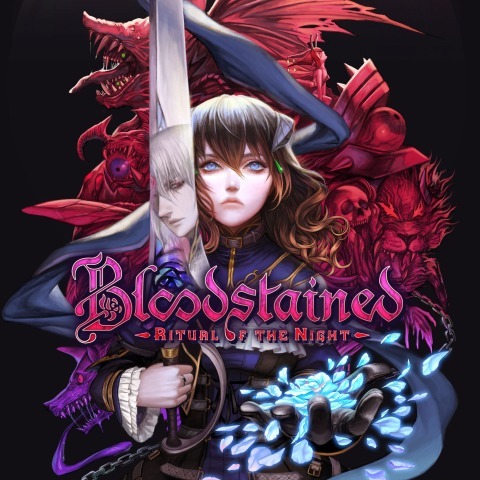
Now to be fair I could be pretty generous with most of this list and admit a lot of things on here could probably be rearranged. This is not an order I feel especially strong about, so feel free to adjust the rankings presented herein to suit whatever headcanon you need to get through the day. However, I do want to recognize Bloodstained as being shockingly good despite taking forever to coming out and having its share of development difficulties. In a post-Mighty no 9 world, Koji Igarashi managed to actually make a good Symphony-em-up, and in a lot of ways that’s exactly what I wanted when I played it… at the end of 2019 and the beginning of 2020. Hey man, it barely missed last year’s list, so it’s gonna make this year’s.
One of my favorite things about Bloodstained, actually, is the way you can break it and become absurdly powerful at your own pace and leisure. If you wanna speedrun, it’s good for that, if you wanna grind out a bunch of overpowered abilities and materials, it’s good for that, and if you wanna solve weird sidequests and cooking recipes, it’s good for that. It’s a kitchen sink mentality to Metroidvania design that I appreciate, even if any one aspect is probably done better elsewhere (note to self: maybe stream Super Metroid? And have people yell at me?) and, perhaps more appreciatively, it’s a video game-ass video game. Sometimes ambition is less exciting than doing something comfortable very well, and in that sense Bloodstained is what I needed at that particular time and place. But also, let’s be real, if repeating games weren’t disqualified the answer would still be Total War Warhammer II.
And that’s it from me, only two weeks late! If Giant Bomb can do their GOTY in mid-January, so can I. Look forward to more dumb hijinks from me in the future, either here, on my twitch channel, and… potentially elsewhere? Things are gonna be exciting.
